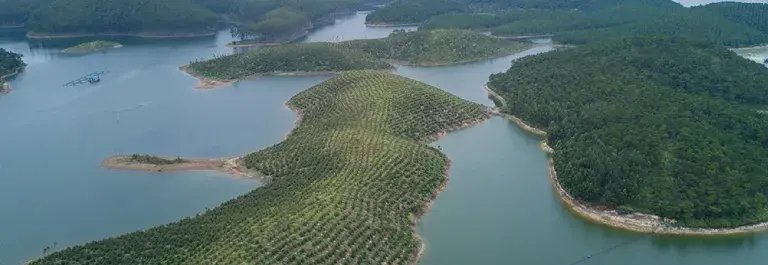Claims, credibility and landscape approaches
Patrick Mallet, Innovations Director at ISEAL, and Akiva Fishman, Senior Program Officer at World Wildlife Fund, discuss what credible assurance at a landscape level looks like.
As the rates of climate change, deforestation and biodiversity loss continue to increase, the urgency to address these sustainability challenges grows. In recent years, landscape and jurisdictional approaches have become an increasingly popular response to these challenges.
The idea is a compelling one. Rather than looking at individual sites, suppliers or sectors, these approaches recognize that issues like deforestation, habitat conversion, land rights and rural development are often best addressed at a larger scale – across whole landscapes or jurisdictions. Bringing together all stakeholders – producers, sourcing companies, governments, civil society, NGOs, and investors – to work towards common goals has the potential to drive large-scale, lasting improvements.
Leading companies are increasingly looking to landscape approaches as a piece of the strategy to deliver their sustainability commitments – from eliminating deforestation and exploitation in their supply chains, to contributing towards the UN Sustainable Development Goals. Indeed, there’s a growing expectation that responsible companies need to do more than just source products from suppliers that meet high standards: they should be actively contributing to improvements, through both support within their own supply chains and interventions to address challenges at landscape and systemic levels.
But if landscape approaches are to be more than just the latest sustainability buzzword, then they need to be able to demonstrate that they are delivering on the environmental and social issues that matter. In other words, they need a credible assurance system – a robust, transparent and impartial means to monitor, verify and communicate progress.
ISEAL and WWF know the importance of credible assurance from our work with voluntary sustainability standards in various sectors and commodities. Companies can use credible sustainability certification to demonstrate progress towards their sustainability goals, give assurance to investors that they are addressing key business risks, demonstrate due diligence, and secure their social licence to operate. At the same time, audits and assessments provide valuable data that can lead to improved social, environmental and economic performance.
Credible assurance also forms the basis for companies to make public claims about their policies and performance: that their paper comes from well-managed forests, their seafood is from sustainable sources, that farmers producing their coffee and cocoa receive a fair price, and so on. This in turn can enhance a business’s reputation, attract new customers, and incentivize further improvements in production practices.
Similar principles apply when it comes to landscape approaches. Without a reliable monitoring and verification system, businesses will struggle to show how landscape interventions are contributing towards their zero-deforestation, climate or other sustainability targets, or to provide assurance to investors and other stakeholders. Any public claims they make about sustainability in the landscapes they source from risk being seen as little more than greenwash.
With more and more landscape initiatives springing up around the world, now is the time to develop an understanding of what credible assurance for landscapes should look like. WWF and ISEAL recently published a joint paper that aims to stimulate discussion on this subject. It considers what credible assurance means for landscape initiatives at different stages in their development – from checking the essential components of an effective management framework, to assessing the robustness of the monitoring system, through to verifying the results achieved.
It also looks at the claims that landscape initiatives and the companies that source from them can legitimately make at each stage, recognising that landscape initiatives are long-term endeavours and it may take years before there are significant, verifiable impacts to report.
Companies might start with aspirational statements of what the initiative aims to achieve – “We are committed to halting deforestation and habitat conversion in the Cerrado”, or “We’re supporting efforts to achieve 100% sustainable palm oil in Sabah by 2025.” Only when concrete progress is being measured and credibly verified can a company start to make claims about improvements – that it’s helping to reduce deforestation in a particular landscape, or that it has helped a state avoid a certain level of carbon emissions.
Effecting change at a landscape scale is inherently more challenging than working with individual producers, given the range of stakeholders and the number of moving pieces. Verifying progress and communicating accurately about landscape-scale change also throws up challenges. For example, what happens when the landscape as a whole is making progress, but the individual supplier a company sources from is not – or vice versa? What if progress on some or all issues stalls, or goes into reverse?
None of these challenges is insurmountable – but these are the kind of questions we need to be discussing. If landscape approaches are to achieve their potential, they need the right combination of incentives and structures in place to drive continued improvement over time. Robust assurance and claims are a critical part of this. Let’s make sure we get them right.

